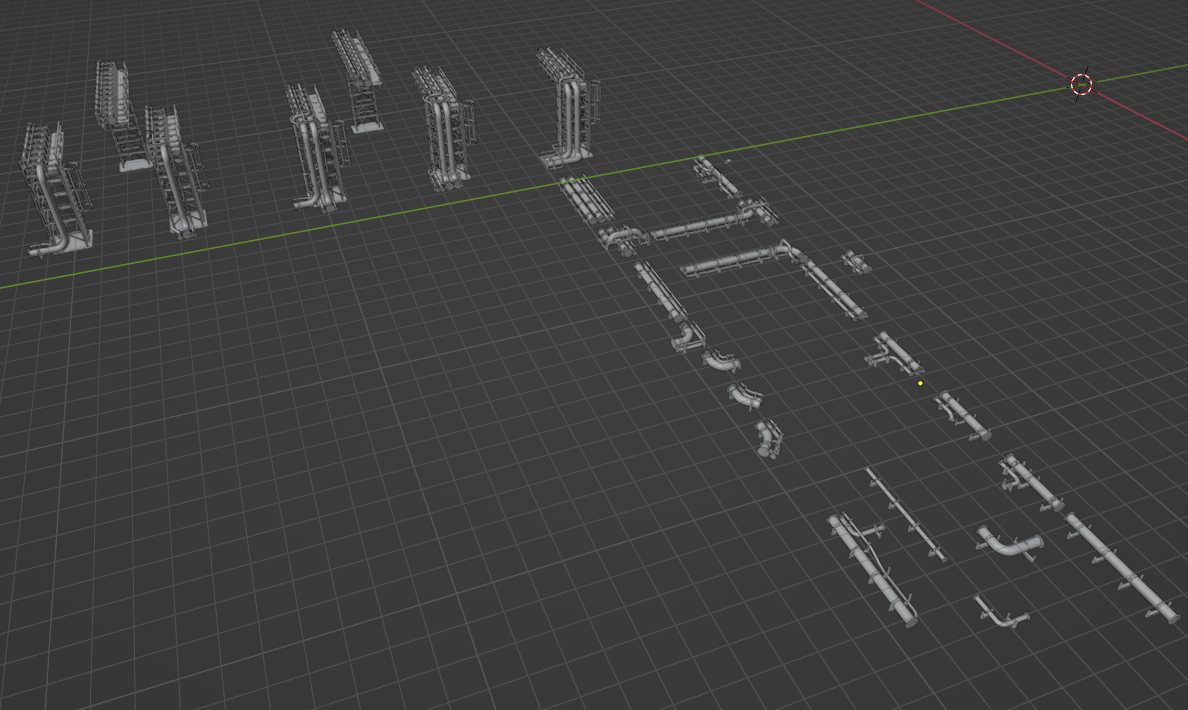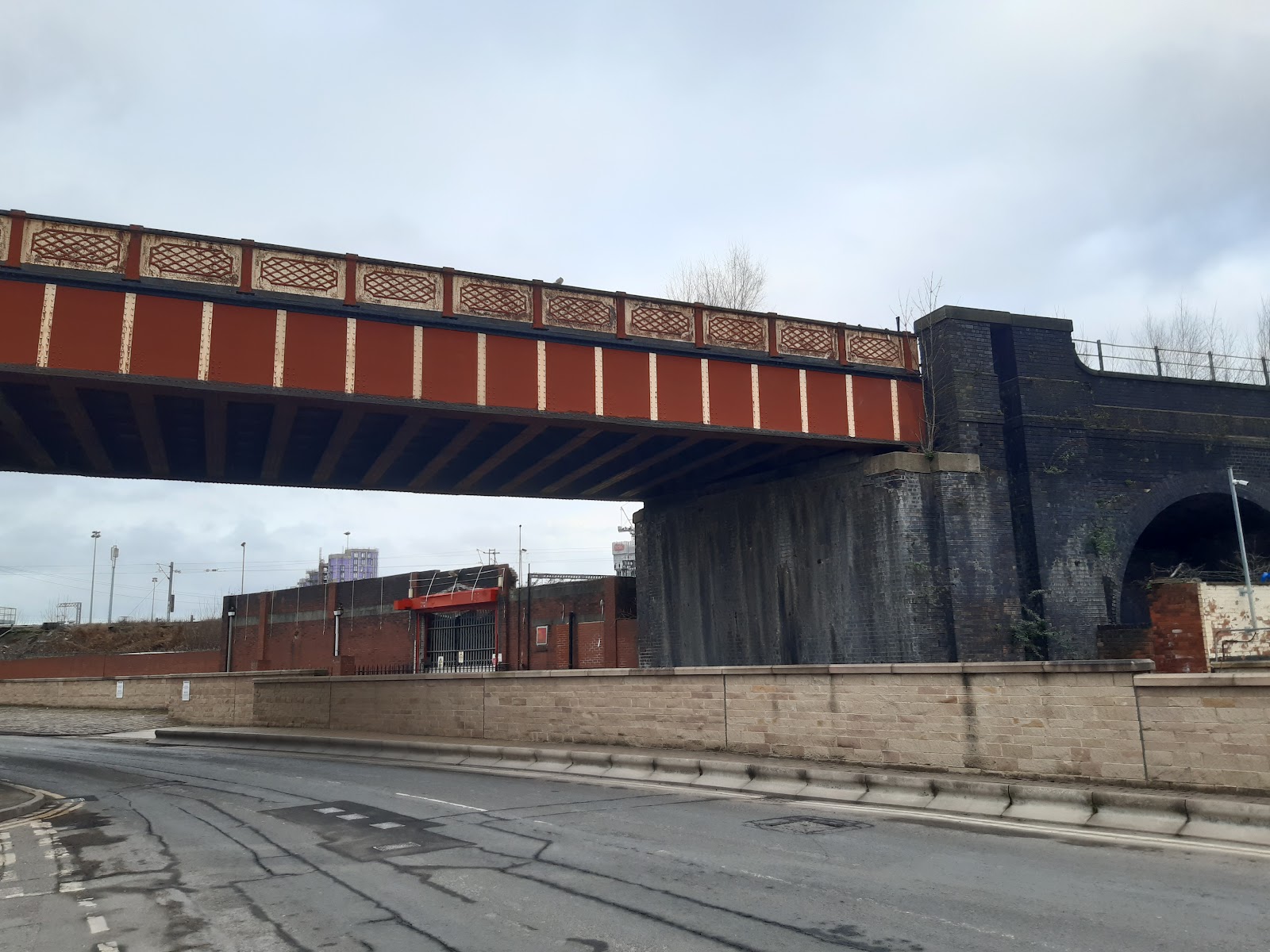Pipes
I work in the chemical industry, and I find all the pipework going round factories fascinating. Often all there is in the pipes is steam and water - where I work that is the case, which is a relatively small site.
NOTE: The models discussed are available to download from my Cults3d pages. See the Chemicals by Rail collection!
This example is from Liverpool Docks, and I would guess the large pipe contain steam, the smaller would include a condensate line, returning condensed steam back to the boiler, and maybe hot and cold water.
The system at Liverpool docks is unusual in that the pipes run at high level, coming down to ground level only where they are accessed by a building. It is more usual for the pipes to run along the ground, and then jump over roads and railways.
Large sites often have chemicals in the pipes, and that can result in a lot of pipework, as this view of Stanlow oil refinery shows.
Modular Pipes
On the real thing, flanges are used to terminate pipes, and pipes are connected by bolting flanges together. In my system, sections are connected by gluing flanges together, and the system revolves around three sets of flanges. At the top there are flanges for six pipes, and at the bottom two different configurations for three pipes. I call these "double", "flat" and "compact".
All pipes are made using Bezier curves, with bevel depths set to 1.5, 0.7 and 0.4. A standard straight section is 40 mm long, but other sections vary as the situation requires.
Here is the double straight. It has four supports; I found if they are solid at the bottom they are quite easy to remove from the supports.
Here it is in action at an early stage, not glued together. The sections on the left are an older design and do not quite sit flat!
Here is what I have so far...
There are a lot of options here, but the range is still limited, as you need to need match up the flange type, and as an added complication they are not symmetrical, so you need to match a left-handed flat to a right-handed flat, for example.
Going Chiral
All this means that although there are numerous parts in the download, there are a lot of bits that are not available. Do remember that you can print mirror images using your slicing software, which almost doubles the number of parts available.
This brings up the issue of chirality, an important concept in chemistry, and as this is for a chemical site, it seems appropriate to mention. Something is chiral if it is not identical to its mirror image. The classic example is a glove. A right-hand glove is the mirror image of the corresponding left-hand glove, but they are not identical. Gloves are chiral. Chairs, on the other hand, are usually achiral. If a component of the set is chiral, you get a free extra part by mirroring it in the slicing software. The only achiral components are: the various straights, the two bridge extenders and the two flat turns.
Pipe bridges
Given this is designed for a railway, we are going to need a pipe bridge!
There are two types, for three pipes and six. Both are designed to span two tracks, but each has an extender. Each extender will allow a further two tracks. There are five options for ends, but they are all the same end of the bridge - you will need one to be mirrored for the other end.
If you have a six pipe bridge, you have three end options, two to double flanges, and one to compact and flat. For a three pipe, there are two options, to either compact or flat.
Turns
For flat there are four bends, allowing the pipes to turn left or right, at either 90° or 45°.
Compact has only one bend, but it is configured differently, so the mirror image will take it the other way. Which one you need is determined by which end of the straight it is on.
Footbridges
There are two footbridges, that would allow workers to cross the pipes. One is for six pipes (double), the other for the rest.
Single pipes
Single pipes are available for medium and large, both straight and turning. It is not for small - I think it will be too thin to print successfully.
Converting
A converter goes from flat to compact.
Converters go from double to flat and compact, with the former coming off the side, either left or right.
A converter goes from flat to large pipe, the others disappear into the ground.
A converter goes from flat to large pipe and, to the side to medium pipe, the small disappears into the ground.
A converter goes from compact to large pipe and, to the side to medium pipe, the small disappears into the ground.
Infrastructure
Now you need some tanks, stills and reactors for the pipes to serve...









Comments
Post a Comment